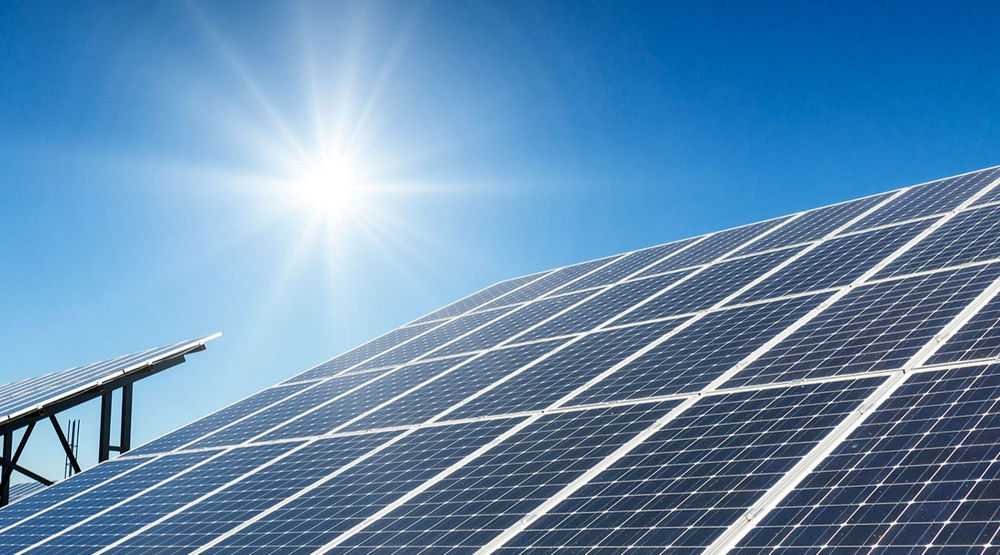The use of solar energy is not new. Its history dates back to the seventh century B.C. Glass and mirrors were initially used to focus the sun’s heat in order to kindle fires. Today, everything is powered by solar energy, including buildings and cars. As interesting as that may be, there is even more, solar panels have the potential to be more powerful.
A combination of materials makes up the solar panels in which solar energy is produced. One of the most prevalent elements on Earth, silicon, is used in many solar panels. However, because it is expensive, its efficiency is constrained as its challenging to produce silicon crystals of sufficient quality, residential solar systems are typically constructed using comparable but less expensive components like copper, indium, gallium, and selenide (CIGS). This has led scientists to investigate new substances, including ferroelectrics like barium titanate, a mixed oxide consisting of barium and titanium to produce more power in solar panels.
Studies by academics at Martin Luther University Halle-Wittenberg (MLU) have proven that the potential for solar cell efficiency can be greatly improved. This research has been published in the journal “Science Advances.” According to their research, to increase the photovoltaic impact of ferroelectric crystals, three distinct materials must be arranged at intervals in a lattice, this can boost the photovoltaic effect by 1000. This discovery by academics at MLU was accomplished by building crystalline layers of barium titanate, strontium titanate, and calcium titanate by arranging them on top of one another.
Dr Akash Bhatnagar, a physicist from MLU’s Centre for Innovation Competence SiLi-nano explains that “ferroelectric means that the material has spatially separated positive and negative charges.” Bhatnagar further revealed that “the charge separation leads to an asymmetric structure that enables electricity to be generated from light.” Unlike silicon, ferroelectric crystals don’t need a “pn junction,” or positively and negatively doped layers, to produce the photovoltaic effect. This makes manufacturing solar panels considerably simpler.
Pure barium titanate produces a relatively modest photocurrent because it does not absorb much sunlight. According to the most recent study, integrating incredibly thin layers of various materials greatly boosts solar energy generation. Bhatnagar establishes that “the important thing here is that a ferroelectric material is alternated with a paraelectric material. Although the latter does not have separated charges, it can become ferroelectric under certain conditions, for example at low temperatures or when its chemical structure is slightly modified.”
The study team led by Bhatnagar found that switching the ferroelectric layer between two different paraelectric layers significantly increases the photovoltaic effect. Yeseul Yun, a PhD student at MLU and the first author of the study explains his views on the research, “We embedded the barium titanate between strontium titanate and calcium titanate. This was achieved by vaporising the crystals with a high-power laser and redepositing them on carrier substrates. This produced a material made of 500 layers that are about 200 nanometres thick.”
The new material was exposed to laser light while being tested for photoelectric properties. Even the research team was shocked by the outcome: the current flow was up to 1,000 times greater than in pure barium titanate of a similar thickness, despite a nearly two-thirds reduction in the amount of barium titanate that makes up the major photoelectric component.
Bhatnagar confirmed that “the interaction between the lattice layers appears to lead to a much higher permittivity – in other words, the electrons are able to flow much more easily due to the excitation by the light photons.” The measurements also demonstrated the high stability of this impact, which remained essentially constant over a six-month period.
Conclusively, the MLU research team is confident in her research, it is now necessary to conduct additional research to determine the precise reason for the remarkable photoelectric effect. Bhatnagar is certain that the new concept can be practised and has the potential to be applied to solar panels in the real world. The study was supported by the Federal Ministry of Education and Research (BMBF), the Deutsche Forschungsgemeinschaft (German Research Foundation, DFG) and funding from the European Regional Development Fund (ERDF).

